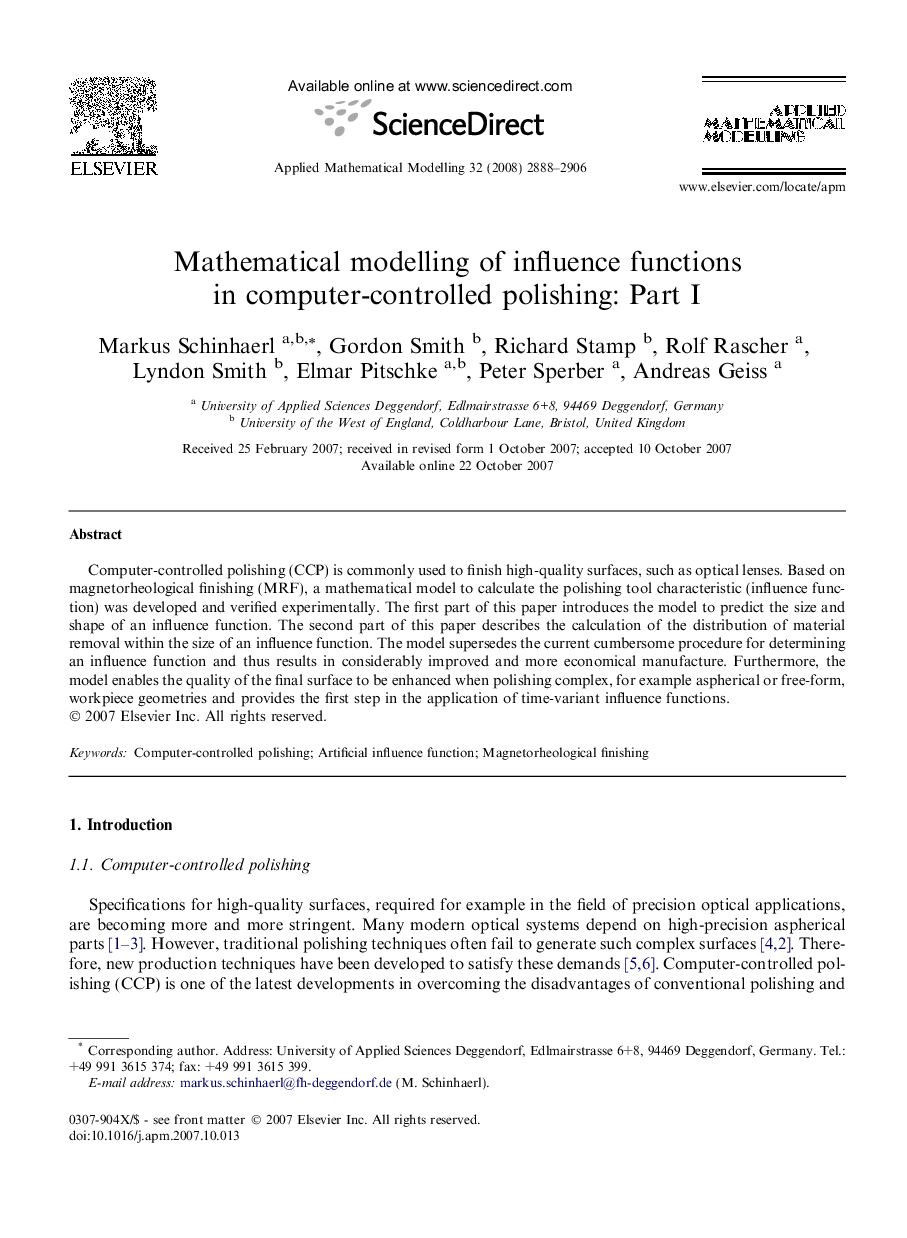| Article ID | Journal | Published Year | Pages | File Type |
|---|---|---|---|---|
| 1706183 | Applied Mathematical Modelling | 2008 | 19 Pages |
Computer-controlled polishing (CCP) is commonly used to finish high-quality surfaces, such as optical lenses. Based on magnetorheological finishing (MRF), a mathematical model to calculate the polishing tool characteristic (influence function) was developed and verified experimentally. The first part of this paper introduces the model to predict the size and shape of an influence function. The second part of this paper describes the calculation of the distribution of material removal within the size of an influence function. The model supersedes the current cumbersome procedure for determining an influence function and thus results in considerably improved and more economical manufacture. Furthermore, the model enables the quality of the final surface to be enhanced when polishing complex, for example aspherical or free-form, workpiece geometries and provides the first step in the application of time-variant influence functions.
